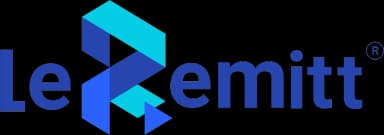EXIM Landscape
Advance Authorisation Scheme; Benefits to Exporters
As a businessman, the one aspect that will constantly challenge you is staying competitive in quality and pricing. When you are an exporter, the competition takes on a new avatar because your competitors are now international players. The key aspect as an exporter is ensuring there’s no compromise in the quality of goods you export and keeping costs low.
The Indian government is aware of this and the benefits of foreign currency influx. To this end, it offers numerous export promotion schemes in India, including the Advance Authorisation Scheme. Combining this with the Duty Drawback Scheme helps make the export business more viable.
This scheme aims to help exporters improve the quality of their products and become more competitive by allowing them to import duty-free machinery and raw materials required for production. When exporters can meet global quality standards, obtaining favorable export payment terms becomes easier.
What is the Advance Authorisation Scheme (AAS)?
Under the advance-authorisation scheme, exporters or businesses contributing to exports can import machinery, equipment, or raw materials without paying customs duty to produce goods for export. The imported material or machinery must be physically incorporated into the final export product, with concessions made for normal wastage during production.
What is the purpose of AAS?
The Indian Government wanted to allow duty-free imports of raw materials and other inputs used to manufacture goods for export. This move would ensure quality output at reasonable prices, enabling exporters to compete in international markets.
What are the eligibility criteria for AAS?
The eligibility criteria for AAS are based on Standard Input-Output Norms (SION), which define the permitted quantities of inputs per unit of exported products.
What are the benefits to exporters from the Advance Authorisation Scheme?
As an Indian exporter, here are some of the benefits you will get from leveraging the AAS, including exemptions from the following:
- Basic customs duty
- Anti-dumping duty
- Safeguard duty
- Other applicable duties
Which governing body will exporters need to approach to benefit from AAS?
Exporters must approach the Directorate General of Foreign Trade (DGFT) to take advantage of AAS.
What does the Advance Authorisation Scheme offer?
As we said earlier, exporters can use this scheme to improve the quality of their products and keep costs competitive by reducing expenses.
Duty-free import
This means that exporters do not need to pay GST, anti-dumping duty, and customs duty on components, raw materials, packing materials, and fuel, which they use as inputs for export goods.
Export obligation
When the exporter uses AAS, they must export the finished products in a specified quantity and value within the given timeframe.
Standard Input-Output Norms (SION)
The government has specified the amount of input allowed to produce a specific quantity of export goods. A case-specific assessment is carried out if a product does not have particular norms about the input-output ratio.
Actual user condition
The goods the exporter imports must be used in export production and cannot be sold in the local market.
Who is eligible for Advance Authorisation Scheme (AAS)?
While the scheme applies to export businesses generally, there are some specifics to remember when applying for it.
Merchant exporters and manufacturers: This scheme applies to manufacturers who produce goods and sell them to an export trader or merchant, who then exports the goods.
Service providers: If imported inputs are then used to provide export-related services, Deemed exporters: This includes the import of supplies to specific export-related units or projects, such as those based at EOU or SEZ.
How do the scheme benefits help exporters?
Reduction in production costs: When exporters are able to save on customs duty, it reduces the overall cost of operation and production, putting them in a position to offer competitive rates.
Increase in cash flow: Exporters who do not have to make duty payments or block capital have better cash flow.
GST-related benefits: As the exporter does not need to pay GST on imported duties, this gives them an added benefit.
What inputs are eligible under the Advance Authorisation Scheme?
While this is not an exhaustive list, it covers many of the inputs that are eligible under the AAS:
- Parts and components of machinery used to produce export goods
- Raw materials like fabrics, metals, and chemicals used for producing final products for export
- Fuel, oils, and other inputs used in manufacturing export goods
- Packaging materials used to pack and send export products
What does the Export Obligation (EO) mean?
This means exporters must be obligated to export using these inputs within 18 months of authorization. Moreover, to produce the export products, the exporter must meet the condition for value addition (usually 15%).
How can exporters apply for Advance Authorisation Scheme?
Here are the steps exporters must follow to apply for the AAS:
- They can submit the application online through the Directorate General of Foreign Trade portal
- Along with the application, the exporter must also submit the following:
- Export and import details
- Past performance of exports, if applicable
- The Import-Export Code (IEC)
- The DGFT will check if the norms are applicable and quickly approve the application. If the norms do not exist, they undertake a case-specific assessment
Are there any consequences for non-compliance with AAS?
Yes, if the exporters cannot meet the export obligations, they will be asked to pay all the applicable duties with interest. Furthermore, they may be restricted from availing future benefits from DGFT.
We hope you find the above details helpful in furthering your export business. Keep watching this space for more helpful information like this. At LeRemitt, our goal is to help exporters simplify their operations with solutions that help with inward remittance, document management, trade finance, and more. Click here to learn more.




